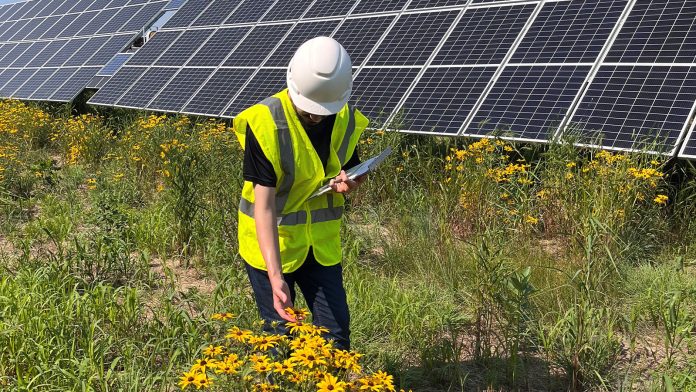A research team from the US Department of Energy’s Argonne National Laboratory and National Renewable Energy Laboratory (NREL) have said that insect levels have tripled in less than five years at two solar sites built on retired agricultural land in southern Minnesota.
Native grass and wildflowers were planted at the two solar facilities, operated by Enel Green Power North America, in early 2018. Between August 2018 and August 2022, the research group conducted 358 observational surveys of flowering vegetation and insect communities.
They found that total insect levels tripled, with native bees showing a 20-fold increase in numbers. The most commonly observed insect groups were beetles, flies and moths. An increase in native plant species was also noted, while pollinators from the solar sites were seen visiting and pollinating soybean flowers in adjacent crop fields.
Lee Waltson, a landscape ecologist and environmental scientist who was the lead author of the study, said the research “highlights the relatively rapid insect community responses to habitat restoration at solar energy sites.”
“It demonstrates that, if properly sited, habitat-friendly solar energy can be a feasible way to safeguard insect populations and can improve the pollination services in adjacent agricultural fields,” said Waltson.
The Argonne National Laboratory said the findings suggest that habitat-friendly solar sites could play an important role in conserving biodiversity and mitigating land-use conflicts associated with the conversion of farmland for solar energy production. It noted that this could be particularly beneficial for the future development of ground-mounted solar.
However, they warned that additional research is needed to understand the feasibility of habitat-friendly solar across different regions and to meet ecological goals such as conserving target insects or wildlife species.





